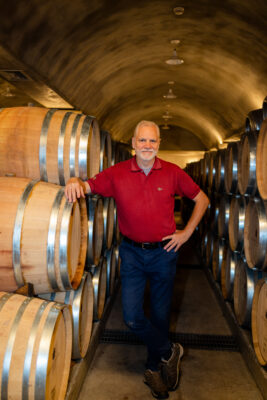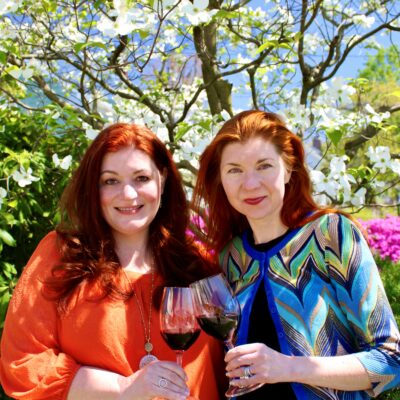Since 1988, Wölffer Estate Vineyards has been walking a fine line between innovation and elegance. It is rare indeed for a winery to coax former Long Island potato fields into producing wines that consistently earn 93+ point raves from Robert Parker while also cranking out fun, beach-worthy ciders infused with botanicals.

From the outside, it may seem incomprehensible. But few in the industry have ever doubted Wölffer’s ability to pull it off. The winery regularly earns accolades from critics and everyday wine drinkers alike (81,500 followers on Instagram and counting), the most recent of which is its tie for Governor’s Cup with Hazlitt 1852 Vineyards in the 36th Annual New York Wine Classic. Roman Roth, winemaker and partner at Wölffer, credits the decades of success to his and founder Christian Wölffer’s original goal of innovating and offering the most elegant, terroir-driven expressions Long Island terroir can offer.
“Christian and I were very passionate and creative to start with, and out of necessity, we looked to innovate,” Roth explains. “We started making a serious dry Rose in 1992 and added Brut Sparkling Wine made in the traditional Champagne method to our regular offering of Chardonnay and Merlot. We made the first $100 Wine on the East Coast.”
They were well ahead of the rosé craze, and making serious, dry Champagne-style wine in Long Island was practically anathema in the 1990s. But the crew isn’t afraid of having fun either.
“We started making Verjus which became popular with many of the great chefs in New York,” Roth says, explaining that Verjus is indeed “apple wine. That of course turned into our #139 Apple Ciders. We knew quality was essential, whether we were making traditional wines, apple ciders or our spirits. New York is one of the most competitive markets in the world so quality and consistency were the only way to build a reputation. In all the years we never changed, quality and innovation go hand in hand at Wölffer Estate. Proprietors Marc and Joey Wölffer and I are all still also willing to take risks. But we are in it for the long haul and understand that quality vineyard work and winemaking costs extra money has always been the foundation of our success.”
Best of Show
The Diosa Late Harvest co-won Wölffer Best of Show (tied with Hazlitt’s Solera Sherry), and in many ways, it’s a perfect representation of its dedication to top-notch quality and boundary-pushing.
The wine is a blend of two vitis vinifera, Chardonnay and Sauvignon Blanc along with the hybrid Vignoles.
“Chardonnay and Sauvignon Blanc are the two white wines we most focus on and also have planted the most,” Roth says. “This gives us a great opportunity to select the perfect site that fully ripens fruit yet retains wonderful acidity. Vignoles is one of the best hybrids and what I like about it that it gets high sugar while keeping extreme high acidity. This is a great combination to make ice wine with great balance and longevity.”
The blend varies year to year, depending on ripeness.
“It is a gut instinct when I make the final decision on selecting the grapes for freezing,” Roth says. “In some years, we also add Gewürztraminer grapes.”
Long Island isn’t cold enough to guarantee a classic in-vineyard ice-wine style freeze, so the team gets creative.
“In order to make an ice wine we pick the fruit as late as possible mid to End of October when every berry is golden and super ripe. And as a result, we also don’t lose any of the ripest berries to birds, storms or fungus but capture all the very best. We carefully lay them in 28-pound picking baskets and bring them to the freezer and turn the dial to 15° Fahrenheit. This is what guarantees that the best fruit is captured and concentrated (by freezing the water in the grapes) to perfection. We are not at the mercy of mother nature.”
The wine is then aged in stainless steel, or very old and clean wooden barrels.
“We want to capture the pure ripe fruit and not change or mask that,” Roth says. “In my opinion, winemakers often make the mistake in ice wine production of utilizing Sauterne-style wine making. The key to success is a slow and steady cold fermentation and to make sure the alcohol does not go to high and the balance of sugar and acidity is perfect.”
The 2020 Diosa is 10% ABV. The resulting wine is a golden amber, with a perfumed nose of honey and dried apricots. It’s unctuous and concentrated, but not cloying. There’s a rippling acidity, with notes of mango, apricot jam, passionfruit.
On one hand, Wölffer’s range reflects the tradition and elegance of the Hamptons, and on the other, its fun-loving party-ready side. A true New Yorker, simply made more delicious by its complexity.
And in the spirit of Wölffer—and all great New Yorkers—you could toast the Diosa’s success with a classic pairing of foie gras or blue cheese. Or, if you’re feeling a little outré, you could sip it with strawberry pie topped with a heaping dollop of vanilla ice cream. Equally excellent, in completely different ways.

Wölffer Estate Diosa Late Harvest 2020
- Grapes: 64% Charonnay from our 1988 vineyard and our Wine Stand Chardonnay block, 20% Sauvignon Blanc and 16% Vognoles.
- Production: 270 cases of 375ml bottles, 12 magnums.
- Final Analysis: 267 g/L R.S. 10% alc. 13.9 g/L TA 3.54 pH
Winemaker Notes: Golden amber in color. The wine has a gorgeous perfume floral nose with rich aromas of honey and dried apricots. The mouth-feel is unctuous and concentrated with rich flavors of passion fruit, mango and apricot jam. The wine has a oily viscosity with great texture and a uplifting vibrant acidity. This is absolutely lip-smacking delicious and the finish is rich and lively and goes on and on. This is a pure and concentrated Ice wine which has what it takes to be able to age for at least 50 years!

About the New York Wine Classic
Organized annually by the New York Wine & Grape Foundation, the New York Wine Classic celebrates a diverse selection of world-class wines from producers within the State. Judging for this year’s competition took place from April 15th – June 15th, 2022 and included 694 entries from 101 wineries from across the state. A total of 7 Platinum, 234 Gold, 324 Silver, and 110 Bronze medals were awarded.

